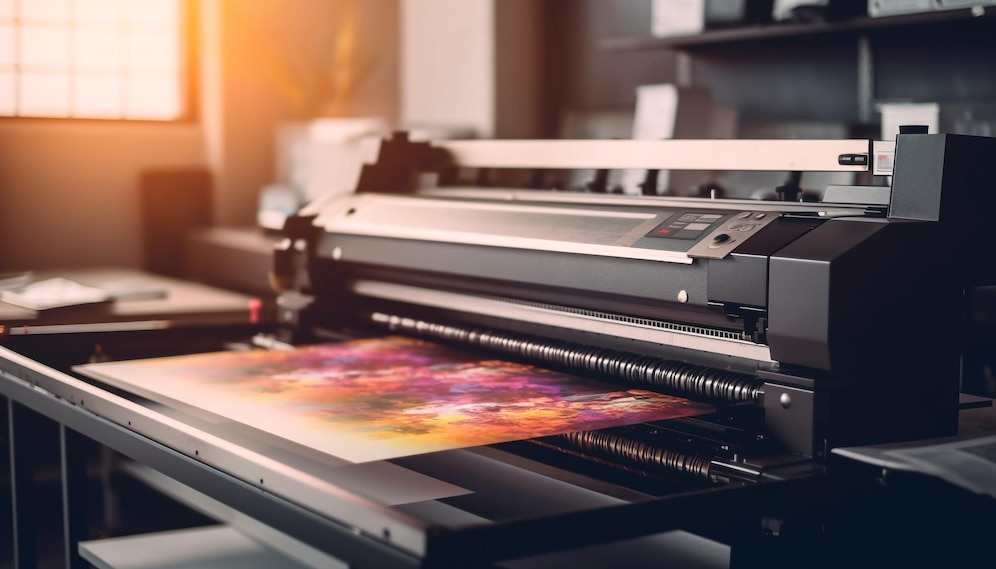In the realm of high-end printing, where precision, quality, and vibrancy are paramount, the role of ink quality cannot be overstated. The journey from a digital design to a physical print involves several critical steps, and ink quality stands as a foundational pillar in this process.
From achieving accurate color reproduction to ensuring longevity and consistency, the ink utilized in high-end printing in NYC plays a pivotal role in determining the overall success of the final product.
Color Accuracy and Reproduction
One of the most critical aspects of high-end printing is the accurate reproduction of colors. The ink quality directly influences how faithfully the colors on a digital screen can be translated onto paper. High-quality inks are formulated to achieve a wide color gamut, allowing for a broader range of colors to be accurately replicated. These inks are often pigment-based, offering superior color stability and resistance to fading, resulting in prints that remain vibrant over time.
Pigment vs. Dye-Based Inks
There exists a dichotomy between pigment-based and dye-based inks in high-end inkjet printing in NYC. Pigment-based inks, composed of tiny solid particles suspended in a liquid carrier, offer enhanced color accuracy and longevity specifically tailored for inkjet printing. They are particularly well-suited for archival printing, where prints are intended to last for generations without significant color degradation. On the other hand, dye-based inks, which dissolve colorants in a liquid carrier, provide a wider color range and can produce more vibrant prints in the realm of inkjet printing. However, they might be more susceptible to fading when exposed to light and environmental factors.

Print Longevity and Durability
Ink quality also plays a substantial role in determining the longevity and durability of prints. High-end printing often caters to industries such as fine art, photography, and graphic design, where prints are not only meant to be visually striking but also resistant to the test of time. High-quality inks, particularly pigment-based ones, offer better resistance to factors like UV radiation, moisture, and atmospheric pollutants, ensuring that prints maintain their quality and appeal over extended periods.
Archival Quality
Achieving archival quality in prints requires inks that are engineered to withstand the deterioration caused by external factors. Pigment-based inks, due to their particulate nature and chemical composition, tend to be more resilient in this regard. They interact with paper fibers in a way that enhances adhesion, resulting in prints that are less prone to cracking or peeling. This is especially important in high-end printing, where the value of the final product may be contingent upon its ability to retain its original appearance over time.
Consistency and Reliability
Consistency is a hallmark of high-end printing, and ink quality plays a pivotal role in achieving this consistency across multiple prints. High-quality inks are manufactured with precision, ensuring that each batch meets strict standards. This consistency eliminates the variability that can often plague lower-quality inks, leading to prints with noticeable discrepancies in color, density, or texture.
Color Management
Achieving color consistency in high-end printing involves meticulous color management, wherein the properties of the ink are closely monitored and controlled. High-quality inks have predictable color properties, allowing for more accurate color profiling and calibration. This, in turn, translates to prints that consistently match the original digital design, fostering client trust and bolstering the reputation of the printing service.
Substrate Compatibility
The ink’s compatibility with various substrates is another crucial aspect of high-end inkjet printing services in NYC. Different projects may require printing on diverse surfaces, such as matte or glossy paper, canvas, textiles, and even specialty materials. High-quality inks are formulated with substrate compatibility in mind, ensuring that the ink adheres well, dries properly, and retains its vibrancy regardless of the surface it’s applied to. This versatility empowers printers to experiment with different mediums and offer clients a wide array of options.
Conclusion
In the intricate world of high-end printing, where the confluence of technology and artistry gives rise to visually captivating works, ink quality emerges as a linchpin for success. From accurate color reproduction and print longevity to consistency and substrate compatibility, the ink utilized can either elevate the final product to new heights or diminish its potential. The choice of ink quality is, therefore, a decision that holds far-reaching implications for both printers and their clients.
As technology advances and demands for higher-quality prints continue to rise, the role of ink quality will remain steadfast in shaping the landscape of high-end printing. Inkjet printers that require superior inks stand to reap the rewards of satisfied customers, exceptional output, and a reputation for excellence in an industry where every detail matters.










